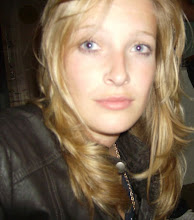Some organisations use different types of Application-Specific Programs to support their CRM (Customer Relationship Management), resource planning, data mining and knowledge management systems.
An organisation I interviewed for a school assingment has developped their own intranet, on which all applications are built. In order to serve their clients perfectly, the organisation developed a Wiki containing very specific information about their clients. The CRM tool is a application-specific program which is edited by the support team every time new information about the client occurs. The wiki contains not only general information about the client, but also about their wishes, earlier orders, loyalty and the service they have to receive. The Wiki is only used by employees, the information is strictly private and the program is fully integrated in the intranet.
For their calendar, the organisation uses a Ajax-based web software called Zimbra. Zimbra is an open source system that enables the employees to share calendars, schedule group meetings and easily look up free-busy times of others and rooms. For accounting the employees use KING, an information system developed by Quadrant in order to get a hold of the financial as well as logistic administration in a medium sized organisation.
Overall, a very effective media mix!
zondag 28 februari 2010
zondag 14 februari 2010
The starfish and the spider

Since I read the book “The starfish and the spider” I can see them everywhere. I am not talking about the actual animals but about organisations. According to Brafman & Beckstrom (2006) organisations are comparable to starfish and spiders. A spider stands for a centralized hierarchical organisation while a starfish stands for decentralized organisations. Because this might sound a little vague, let me explain…trend towards professionalization in organisations. When the professionalism of an individual or an organisation increases, a person may experience a hard time receiving orders from the top. If this person is specialized in a case, why should someone else, with less knowledge about the case, decide what to do with it? Because of such issues, organisations - with hierarchic elements – can be incapable to make decisions. These so called spiders have one head, which is its control centre, its centre of power. When you chop of its head, the spider is dies; it is not longer able to function.
Other than a spider, a starfish has no head and no centre of power, it has got legs. When you chop off one of those legs, the starfish will continue to function and a new leg will grow back. The starfish stands for an organisation with a decentralized network structure, where all the individuals in an organisation depend on each other but the power of decision making is spread.
 As I said, I can see them everywhere, and that is the reason I am writing this blog. Transforming a spider into a starfish is a huge task. A big part of the power, which is centred in the head of a spider, must be spread into its legs until there is no head anymore. This transformation goes hand in hand with the use of a lot of media. Because the decision-making in the organisation will happen in different ‘legs’ this must be well communicated with other legs; internal communication systems are a must for these starfish. Which systems these starfish use I don’t know yet, but I’ll definitely find out. Next week I have an interview scheduled with a network organisation. I’ll keep you posted!
As I said, I can see them everywhere, and that is the reason I am writing this blog. Transforming a spider into a starfish is a huge task. A big part of the power, which is centred in the head of a spider, must be spread into its legs until there is no head anymore. This transformation goes hand in hand with the use of a lot of media. Because the decision-making in the organisation will happen in different ‘legs’ this must be well communicated with other legs; internal communication systems are a must for these starfish. Which systems these starfish use I don’t know yet, but I’ll definitely find out. Next week I have an interview scheduled with a network organisation. I’ll keep you posted!
Abonneren op:
Posts (Atom)
